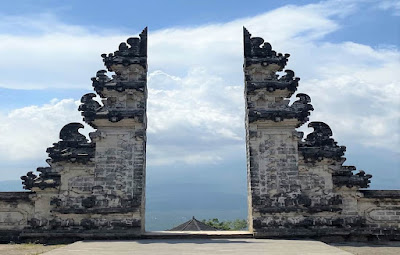My short story “Release” was published online in the Spring Issue (2023) of Amarillo Bay. Set by the Pacific Ocean in Santa Cruz the day after Thanksgiving, it involves a chance encounter and a spur-of-the-minute decision which will change the direction of Georgiana’s life—sadly stifled lately.
"Though unseen, the tides of the Monterey Bay were ruminative in their overheard rhythms, their profound exhalations, over and over, and Georgiana's own breath began to imitate them naturally as she traversed the night. A bright planet hung low in the darkness off towards Monterey, and then eventually Japan, farther than far. Venus, she guessed, wishing she could remember more from the semester of astronomy she'd taken for fun one year at Mount Holyoke.
What a relief to be outside, walking, her thoughts her own, the possibility of other places there again. Places with life, color, substance, quirks. Not all high tech and ungiving unalluring white or stainless surfaces. A few dogs, flitting or lumbering along the oceanside sidewalk. Lighted windows to look in, passing. She envied some with deep bookshelves and antique wooden tables set with burgundies, burnt oranges, copper, chocolate, mulberry, and dusty rose. Always the gentle soughing of the nearby waves as they came in, went out, audibly grazed the shore.
This was, nearly, what she'd been looking for."
. . .
"He picked up the soft-sided mesh carrier the mouse had traveled in, and a bigger canvas shoulder-bag, which he opened when they got to a couple of Adirondack chairs just off the parking lot.
'Oh, I'd forgotten,' he said with what sounded like amusement. 'We can dine in style.'
Out of the bag he pulled a candelabra with five flameless taper candles which flickered realistically when he set it on the slightly tilted stump between the chairs and turned it on.
'You carry that instead of a flashlight?' Georgiana teased him, amused and curious.
'I took it along to my boyfriend's apartment last night for our Thanksgiving revels, and hadn't gotten it home yet.'
From Bly's more prosaic thermos cups they drank Mayan hot chocolate with ground chiles and cinnamon and ate wedges of vegetable pakora and curried eggplant roti. Though Georgiana felt out of place and embarrassed sitting 'slumming' in it, as her mother would scold, she was grateful for her warm shin-length camel hair coat."
image: Photo by White.Rainforest ™︎ ∙ 易雨白林. on Unsplash














.webp)















